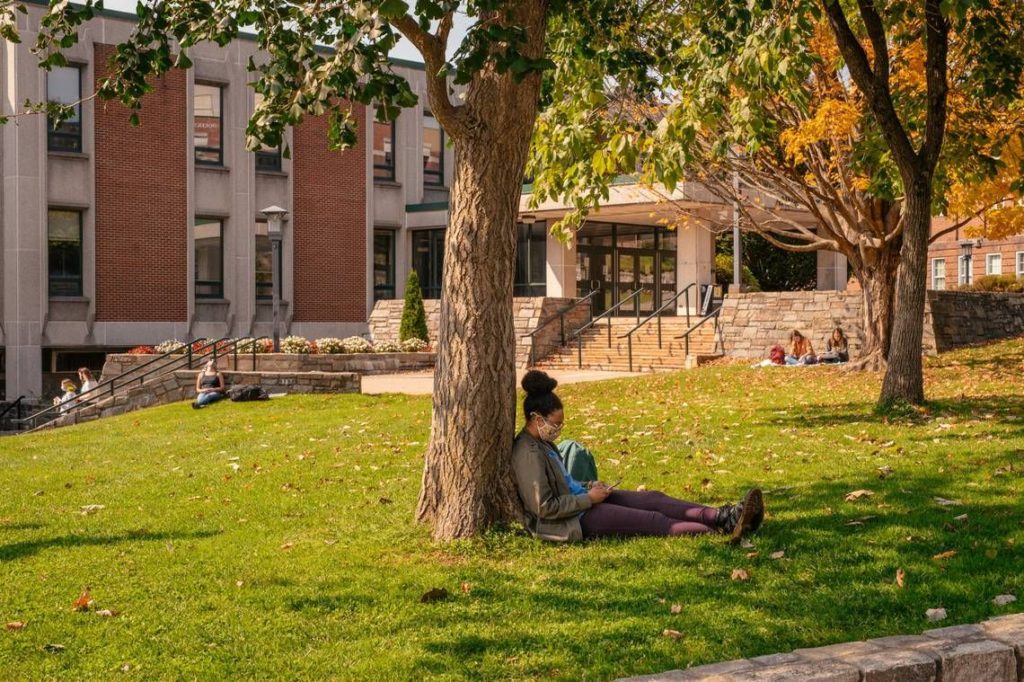[ad_1]
Freshman enrollment is down at colleges nationwide, falling a staggering 16% compared to last year, according to a report by the National Student Clearinghouse Research Center.
While all campuses except four-year, for-profit colleges have seen a dip in registrations, first-year students account for nearly 70% of the total decline in undergraduate enrollment — a drop that has taken researchers by surprise.
“With more data, the downward trends identified in September’s First Look report appear steeper, while also emerging for more states and student groups,” NSCRC’s executive director Doug Shapiro said in a statement. “Most strikingly, freshman students are by far the biggest decline of any group from last year, with a decrease of 16.1% nationally and a 22.7% drop at community colleges in particular.”
Overall, undergraduate enrollment has slipped 4% below what it was last year, and a jump in graduate enrollment seen in early fall has slumped to 2.7% percent, according to the report. Researchers say these uncommon enrollment trends can be attributed to the COVID-19 pandemic, which shuttered college campuses earlier this year and has forced many to switch to remote learning.
Mizzou finds itself at epicenter of SEC’s COVID issues — through no fault of its own
A number of institutions have reported outbreaks since the start of the fall semester, including the University of Georgia, Ohio State University and the University of North Carolina, which moved all its undergraduate classes online earlier this year due to the virus.
Uncertainty about the semester ahead has prompted some incoming students to take a year off, better known as a “gap year,” before starting college. A survey of 2,000 students by the American Council on Education and the American Association of Collegiate Registrars and Admissions Officers in the early months of the pandemic found that 17 percent of high school seniors were considering deferring their college admissions.
Story continues
“It’s weird that more people aren’t doing it,” Asher Powers, 19, who plans to spend a year in Israel before starting at Muhlenberg University, told The Morning Call in Pennsylvania. “This would be the perfect time.”
Instead of trekking across campus at Clemson University this fall, 18-year Hannah Hyatt told USA Today she’ll spend the next several months nannying in her hometown of Charleston.
“It’s so weird,” said Hyatt, who also deferred her enrollment. “I thought I’d be surrounded by a bunch of people my age, but instead I’m hanging out with a baby all day. I do like change, but I’d prefer to not be a year behind everyone else.”
The latest NSCRC report is the second in the center’s “Stay informed with the Latest Enrollment Information” series, which compiled data from 9.2 million students or 54% of participating colleges and universities, according to the center’s website.
The newest data show that undergraduate enrollment fell further among men (6.4%) than it did among women (2.2%). This downward trend held true for all student groups, with Indigenous Americans/Native Alaskans seeing the sharpest drop in enrollment compared to all other ethnic groups, data show.
Other takeaways from the report include:
Enrollment trends at historically Black colleges and universities (HBCUs) were similar to national trends for undergraduate students with four-year, not for profit HBCUs seeing sharper declines.
Undergraduate enrollment slipped across all regions in the U.S., but the Midwest slid the most at 5.7%
Undergraduate certificates and associate degree enrollments are down 8.9% and 8.7%, respectively.
Penn State’s COVID-19 case count increases by 196 since last update, increasing total to 3,362 cases
[ad_2]
Source link
